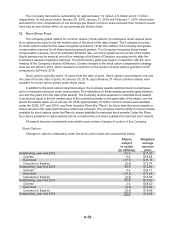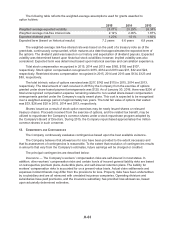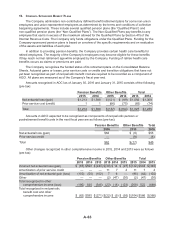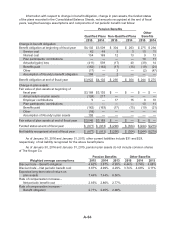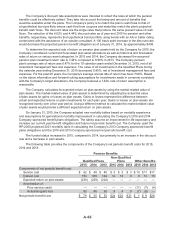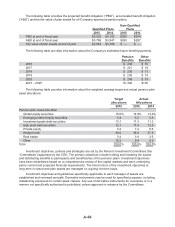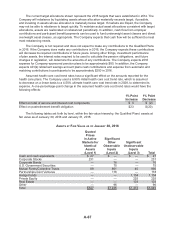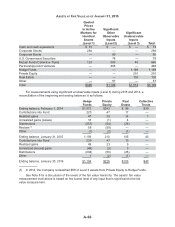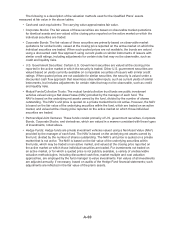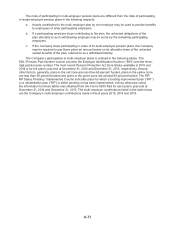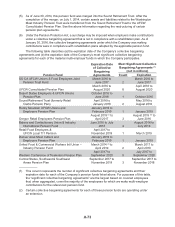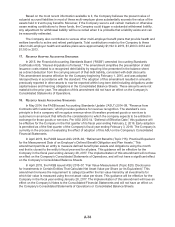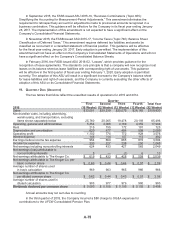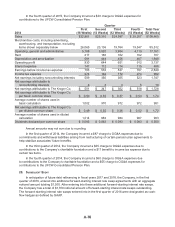Kroger 2015 Annual Report Download - page 143
Download and view the complete annual report
Please find page 143 of the 2015 Kroger annual report below. You can navigate through the pages in the report by either clicking on the pages listed below, or by using the keyword search tool below to find specific information within the annual report.A-69
The following is a description of the valuation methods used for the Qualified Plans’ assets
measured at fair value in the above tables:
• Cash and cash equivalents: The carrying value approximates fair value.
• Corporate Stocks: The fair values of these securities are based on observable market quotations
for identical assets and are valued at the closing price reported on the active market on which the
individual securities are traded.
• Corporate Bonds: The fair values of these securities are primarily based on observable market
quotations for similar bonds, valued at the closing price reported on the active market on which the
individual securities are traded. When such quoted prices are not available, the bonds are valued
using a discounted cash flow approach using current yields on similar instruments of issuers with
similar credit ratings, including adjustments for certain risks that may not be observable, such as
credit and liquidity risks.
• U.S. Government Securities: Certain U.S. Government securities are valued at the closing price
reported in the active market in which the security is traded. Other U.S. government securities are
valued based on yields currently available on comparable securities of issuers with similar credit
ratings. When quoted prices are not available for similar securities, the security is valued under a
discounted cash flow approach that maximizes observable inputs, such as current yields of similar
instruments, but includes adjustments for certain risks that may not be observable, such as credit
and liquidity risks.
• Mutual Funds/Collective Trusts: The mutual funds/collective trust funds are public investment
vehicles valued using a Net Asset Value (NAV) provided by the manager of each fund. The
NAV is based on the underlying net assets owned by the fund, divided by the number of shares
outstanding. The NAV’s unit price is quoted on a private market that is not active. However, the NAV
is based on the fair value of the underlying securities within the fund, which are traded on an active
market, and valued at the closing price reported on the active market on which those individual
securities are traded.
• Partnerships/Joint Ventures: These funds consist primarily of U.S. government securities, Corporate
Bonds, Corporate Stocks, and derivatives, which are valued in a manner consistent with these types
of investments, noted above.
• Hedge Funds: Hedge funds are private investment vehicles valued using a Net Asset Value (NAV)
provided by the manager of each fund. The NAV is based on the underlying net assets owned by
the fund, divided by the number of shares outstanding. The NAV’s unit price is quoted on a private
market that is not active. The NAV is based on the fair value of the underlying securities within
the funds, which may be traded on an active market, and valued at the closing price reported on
the active market on which those individual securities are traded. For investments not traded on
an active market, or for which a quoted price is not publicly available, a variety of unobservable
valuation methodologies, including discounted cash flow, market multiple and cost valuation
approaches, are employed by the fund manager to value investments. Fair values of all investments
are adjusted annually, if necessary, based on audits of the Hedge Fund financial statements; such
adjustments are reflected in the fair value of the plan’s assets.


